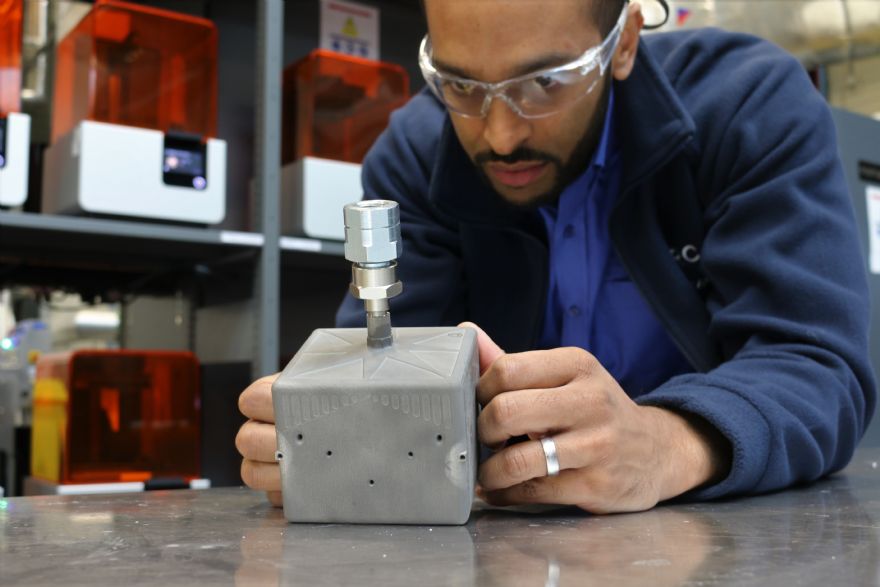
A lightweight cuboidal fuel tank for small satellites has been designed and developed by metal additive-manufacturing engineers at the University of Sheffield Advanced Manufacturing Research Centre (AMRC) as part of a pioneering programme funded by the UK Space Agency.
With the annual number of small satellites deployed forecast to reach around 400 this year — an increase of 300% compared to 2016 — there is a growing demand to dramatically expand mission capabilities, extend orbital life and reduce the cost of ‘constellation deployment’.
AMRC engineers used ‘topology optimisation’ techniques to cut the weight of the tank by over 25%; combined with an almost three-fold increase in fuel capacity over conventional spheroidal storage tanks, this could result in significantly lower launch costs for satellites (cutting 1kg off a launch load can save as much as £15,000 in terms of launch costs).
Abdul Haque, technical lead in metal additive manufacturing at the AMRC, said: “Developing competitive propulsion solutions for small satellites is a game changer for our UK space capability. The MiniTank project lays the groundwork for adding a miniaturised low-cost propulsion technology to the UK’s portfolio.”
MiniTank is a collaborative project between the AMRC and Oxfordshire-based Added Value Solutions UK Ltd (AVS) — a designer of propulsion systems for small satellites — to develop a propellant storage system (for a nano-satellite) that maximises the internal volume while minimising the mass, using novel features that can only be manufactured through additive manufacturing (AM). AVS chose to work with the AMRC’s design and prototyping group (DPG) due to its expertise in designing AM parts.
Optimised solutionAVS system engineer Daniel Staab said: “Using a pressurised tank without the AMRC’s work on AM optimisation would have forced us to choose either a heavy design or a volume-inefficient tank holding much less propellant. MiniTank has shown that metal AM is an alternative route for the manufacture of complex fuel tank designs.”

Mr Haque said: “The final AM fuel tank weighed 360gm, 28% less than the original dry mass of a conventional tank; and the amount of usable space within the tank was estimated at 90%, compared to about 60% for a spherical tank. It can hold about 2.8-times the fuel volume of a 78mm-diameter sphere, which is the largest size that could fit within the allocated design envelope.
“Moreover, during testing, the new fuel tank withstood all non-destructive tests without observable deformation, rupturing at a test pressure of 74 bar, which is 1.9-times the safety factor of the design burst pressure specified in the European Cooperation for Space Standardisation.”
Mr Haque said the purpose of the MiniTank project was to show that it is possible to design an improved fuel tank and to demonstrate what can be achieved by using the AM process. “With AM, you can create complex forms that cannot be manufactured via conventional methods, and the concept we generated was a cuboidal fuel tank.
“Through the concept developments we did in-house, using software tools such as Altair Inspire, Autodesk Netfabb Simulation and PTC Creo Simulate, we were able to assess the design space and identify opportunities for optimisation — such as removing material from low-stress areas and adding material to high-stress areas.
“This project focused on the fuel tank, but if you apply the same optimisation to other components of the CubeSat — the microwave generator housing, the propulsion system, the solar-panel brackets or the framework — you can shave weight off every component. We should be looking at the entire satellite to get the maximum benefits offered by AM.”